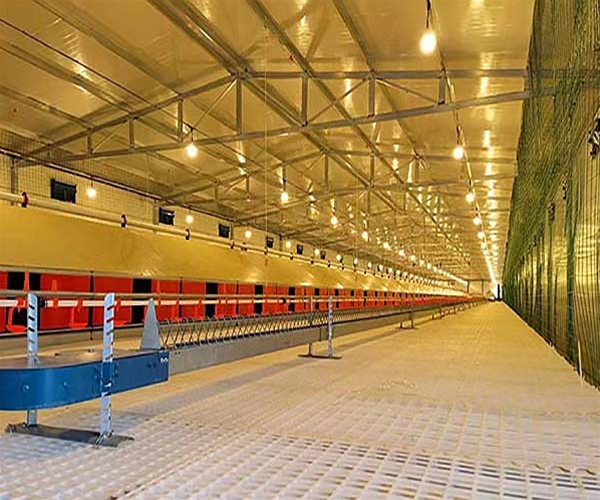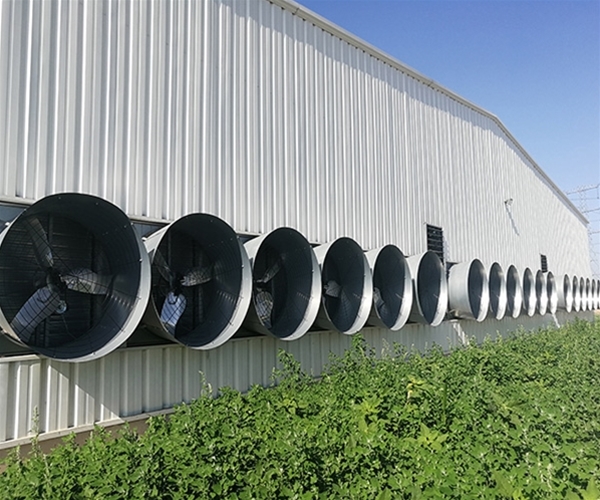In commercial chicken farming, the choice of farming methods directly impacts efficiency, cost control, and space utilization. As farming operations grow, traditional free-range methods often cannot meet high demands for space and resource efficiency. Cage systems offer a practical solution, saving space while improving efficiency. These systems are increasingly adopted in commercial chicken farming because they boost productivity, reduce costs, and optimize land use.
This article compares free-range and cage systems, highlighting how cage systems can drastically reduce space requirements while improving overall efficiency.
Free-Range vs. Cage Systems
- Free-Range: Free-range systems allow chickens to roam freely across open spaces. While this method works well for small-scale farms, it requires large land areas. Chickens need space to move, forage, and perch, which increases costs and decreases efficiency on larger farms.
- Cage Systems: Cage systems house chickens in stacked, multi-level cages. By utilizing vertical space, cage systems allow a higher density of chickens per unit area, reducing the need for expansive land.
Space Requirements for 10,000 Chickens: Free-Range vs. Cage Systems
When comparing free-range and cage systems, the space required for farming 10,000 chickens is significantly different.
Free-Range Farming
Free-range systems require about 0.5 to 1 square meter per chicken. For 10,000 chickens, this means 10,000 square meters or 1 hectare of land. In areas with high land prices, this large space requirement can be a major drawback.
Cage Systems
In cage systems, each chicken typically needs about 0.2 square meters. Stacked cages allow more chickens in less space, so farming 10,000 chickens requires only 2,000 square meters. This is just one-fifth of the space needed for free-range systems.
Commercial Chicken Farming:How Cage Systems Save Space
- Efficient Use of Vertical Space
Cage systems make use of vertical space by stacking cages in multiple layers. This allows for higher stocking densities, optimizing the use of available space. Free-range systems, on the other hand, occupy large horizontal areas and often result in wasted space. - Reduced Wasted Space
In free-range systems, chickens tend to gather in specific areas, leaving other sections unused. Cage systems eliminate this inefficiency by placing chickens in confined spaces, ensuring every square meter is utilized. - Higher Stocking Density
Cage systems allow for higher chicken density within a smaller area. This leads to better resource optimization. When paired with automated feeding and watering systems, cage systems help reduce labor costs and increase profitability.
Advantages of Cage Systems in Commercial Chicken Farming
- Improved Production Efficiency
Cage systems help maintain optimal health and productivity by reducing disruptions among chickens. Automation ensures that feeding, watering, and egg collection processes are more efficient, increasing overall production. - Easier Health Monitoring
It is easier to monitor the health of chickens in cage systems. With chickens grouped together in confined spaces, farmers can quickly identify sick birds and isolate them, preventing disease outbreaks. - Reduced Cleaning and Maintenance
Chickens in cage systems tend to produce waste in a confined area, making cleaning much easier. This helps maintain a sanitary environment and reduces labor costs compared to free-range systems, where waste can spread across large areas. - Lower Labor Costs
Automated systems for feeding, watering, and egg collection reduce the need for manual labor. This makes cage systems ideal for large-scale operations, lowering operational costs and increasing overall efficiency.
Sustainability in Cage Systems
In addition to saving space, cage systems contribute to the sustainability of commercial chicken farming.
- Reduced Energy and Water Consumption
Cage systems often include temperature control features that maintain optimal conditions for chickens, reducing energy use. Automated systems for feeding and watering further minimize waste, improving resource efficiency. - Less Environmental Pollution
By centralizing waste collection, cage systems help prevent environmental contamination. Chicken manure can also be processed into organic fertilizer, promoting sustainability. - Improved Hygiene
Since chickens are confined to specific areas, waste is easier to collect and manage. This improves farm hygiene and helps prevent disease, contributing to healthier chickens and better productivity.
Conclusion
In conclusion, cage systems are a clear winner in commercial chicken farming when compared to free-range systems. By efficiently using vertical space, cage systems drastically reduce land requirements and improve productivity. Additionally, automation in cage systems helps reduce labor costs and ensure a clean, healthy environment for chickens. Cage systems also contribute to sustainability by optimizing resource use and minimizing waste.
For large-scale commercial chicken farming, cage systems are an essential solution for space-saving, cost reduction, and improved efficiency. By adopting cage systems, farmers can meet growing demand while maintaining profitability and sustainability.Explore the advantages of industrial chicken farming systems and how they compare to traditional farming methods for better efficiency and sustainability.


